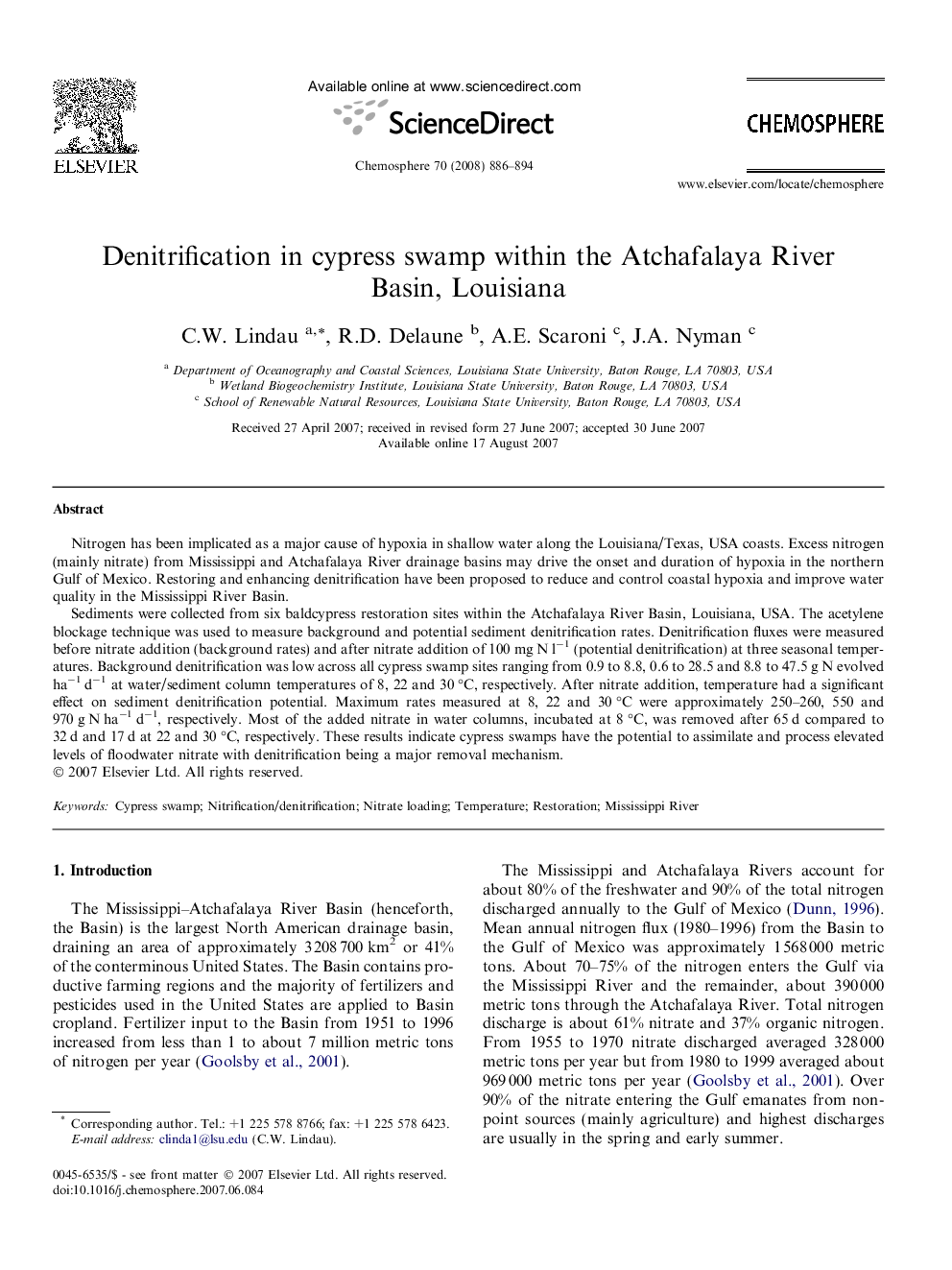| Article ID | Journal | Published Year | Pages | File Type |
|---|---|---|---|---|
| 4414356 | Chemosphere | 2008 | 9 Pages |
Nitrogen has been implicated as a major cause of hypoxia in shallow water along the Louisiana/Texas, USA coasts. Excess nitrogen (mainly nitrate) from Mississippi and Atchafalaya River drainage basins may drive the onset and duration of hypoxia in the northern Gulf of Mexico. Restoring and enhancing denitrification have been proposed to reduce and control coastal hypoxia and improve water quality in the Mississippi River Basin.Sediments were collected from six baldcypress restoration sites within the Atchafalaya River Basin, Louisiana, USA. The acetylene blockage technique was used to measure background and potential sediment denitrification rates. Denitrification fluxes were measured before nitrate addition (background rates) and after nitrate addition of 100 mg N l−1 (potential denitrification) at three seasonal temperatures. Background denitrification was low across all cypress swamp sites ranging from 0.9 to 8.8, 0.6 to 28.5 and 8.8 to 47.5 g N evolved ha−1 d−1 at water/sediment column temperatures of 8, 22 and 30 °C, respectively. After nitrate addition, temperature had a significant effect on sediment denitrification potential. Maximum rates measured at 8, 22 and 30 °C were approximately 250–260, 550 and 970 g N ha−1 d−1, respectively. Most of the added nitrate in water columns, incubated at 8 °C, was removed after 65 d compared to 32 d and 17 d at 22 and 30 °C, respectively. These results indicate cypress swamps have the potential to assimilate and process elevated levels of floodwater nitrate with denitrification being a major removal mechanism.
